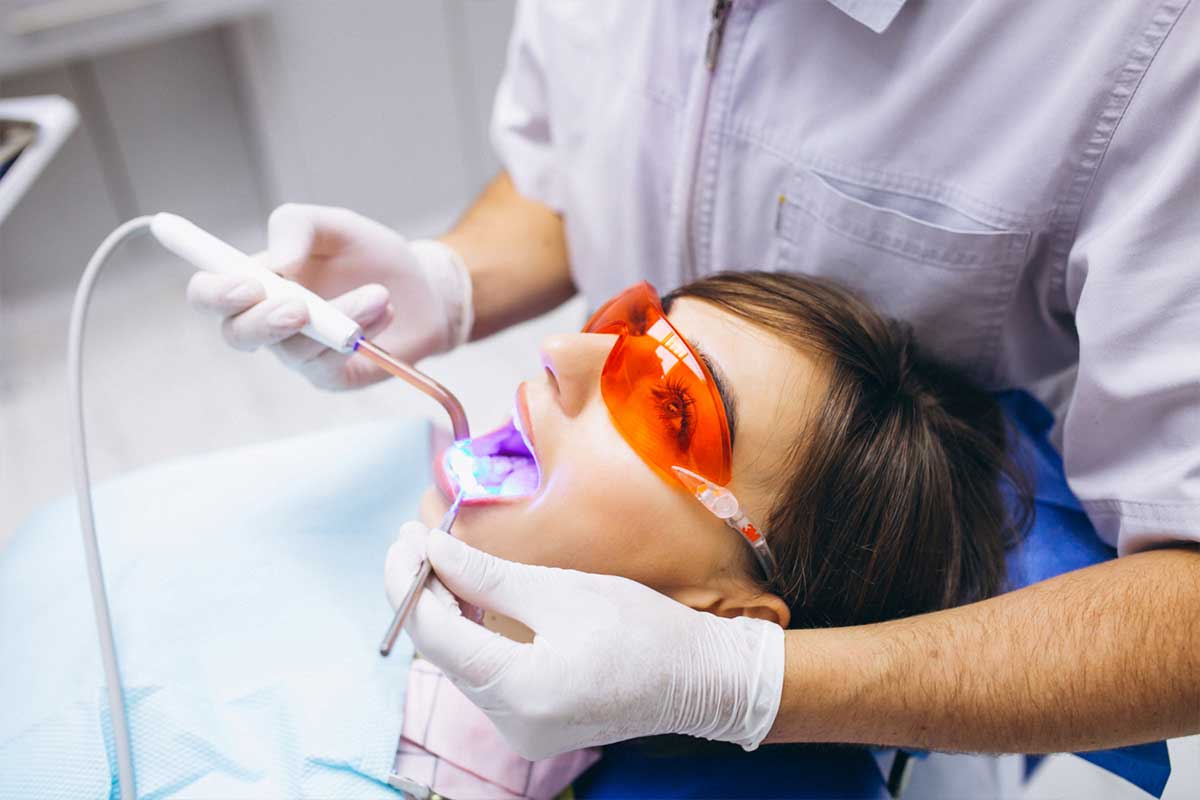What is tooth whitening?
Teeth can often be whitened by the several new techniques of “bleaching” available today. The most common method used is the “in-office” method where a strong bleaching agent is placed over the isolated teeth and a special light is used to assist the bleaching material lighten the teeth. This method is generally more controlled and probably better for people who have tetracycline stains or streaks on their teeth. The “home” techniques involve making trays which fit into the mouth and these are then filled with bleaching materials. When worn for a few hours a day, noticeable results are seen generally within a few days to a couple weeks. Results vary from individual to individual and it is probably best to check with your dentist to help decide which method works best for you. Some of the factors involved include the intensity of the stains, whether or not you have fillings or crowns on your front teeth as well as what may have caused the stains.
What causes staining of teeth?
The most common include aging, consumption of staining substances (coffee, tea, colas, tobacco, blueberries etc.), and old fillings in the teeth. During tooth formation , consumption of the antibiotic tetracycline or excessive fluoride may also cause tooth discoloration.
Who may benefit from teeth whitening?
Almost everyone with healthy teeth will benefit. There is virtually no downside to whitening and lots of upside. As long as you do not have any fillings or crowns on front teeth, you will benefit from tooth whitening by having a whiter younger smile.
Is the process safe?
Whitening is gentle and safe when supervised by your dentist. In fact, dentist-supervised whitening has been done for nearly a century, but has increased in popularity in recent years as yellowed teeth are becoming less and less acceptable, both socially and professionally. Procedures have been simplified and shown to be safe. Reports that claim that the bleaching gel will destroy your enamel are not true. The bleaching process causes no long term harmful effects to your teeth or gums.
How long does it take?
With in-office bleaching the results are instantaneous but for maximum whitening, two sessions are required. With tray bleaching most people will notice a change in the color of their teeth the first night they bleach. Tray bleaching takes about 7-10 days to complete. For the fastest and longest lasting results, we recommend a combination of in-office and home whitening.
Are there any side effects?
Some people may experience a transient sensitivity to cold while bleaching. This disappears soon after the treatment is finished. However you can decrease the frequency of wearing the trays to cut down or eliminate the symptoms. Your dentist may also choose to prescribe a fluoride gel that you wear in the trays for extreme sensitivity. It is important to note that all symptoms are temporary while you are bleaching. There are no long term harmful effects to bleaching
How long do the results last?
Teeth will stay bleached permanently. However depending on your habits, you may need a touch up treatment once every 6 months. If you smoke, drink tea, coffee, or red wine, your teeth will stain faster therefore requiring more frequent touch ups.
You can help your teeth remain white by brushing twice a day, cleaning between the teeth daily with floss or interdental cleaners, seeing your dentist for regular professional cleanings along with occasional touch-up treatments.
What are the different methods available for whitening teeth?
The two main methods for bleaching are In-office bleaching and a tray system.
- With in-office bleaching, a special light is used to heat the bleaching gel to start the whitening process. The light can be either a laser or a plasma arc curing light. The basic idea is to heat the bleach to make the whitening reaction go faster.
- With tray bleaching, custom fitting trays are made for your teeth in which a bleaching gel is worn for a period of 7 to 10 days. Although slower, the results achieved are usually superior than in office treatment. We usually do a combination of in-office and tray bleaching for the best results.
